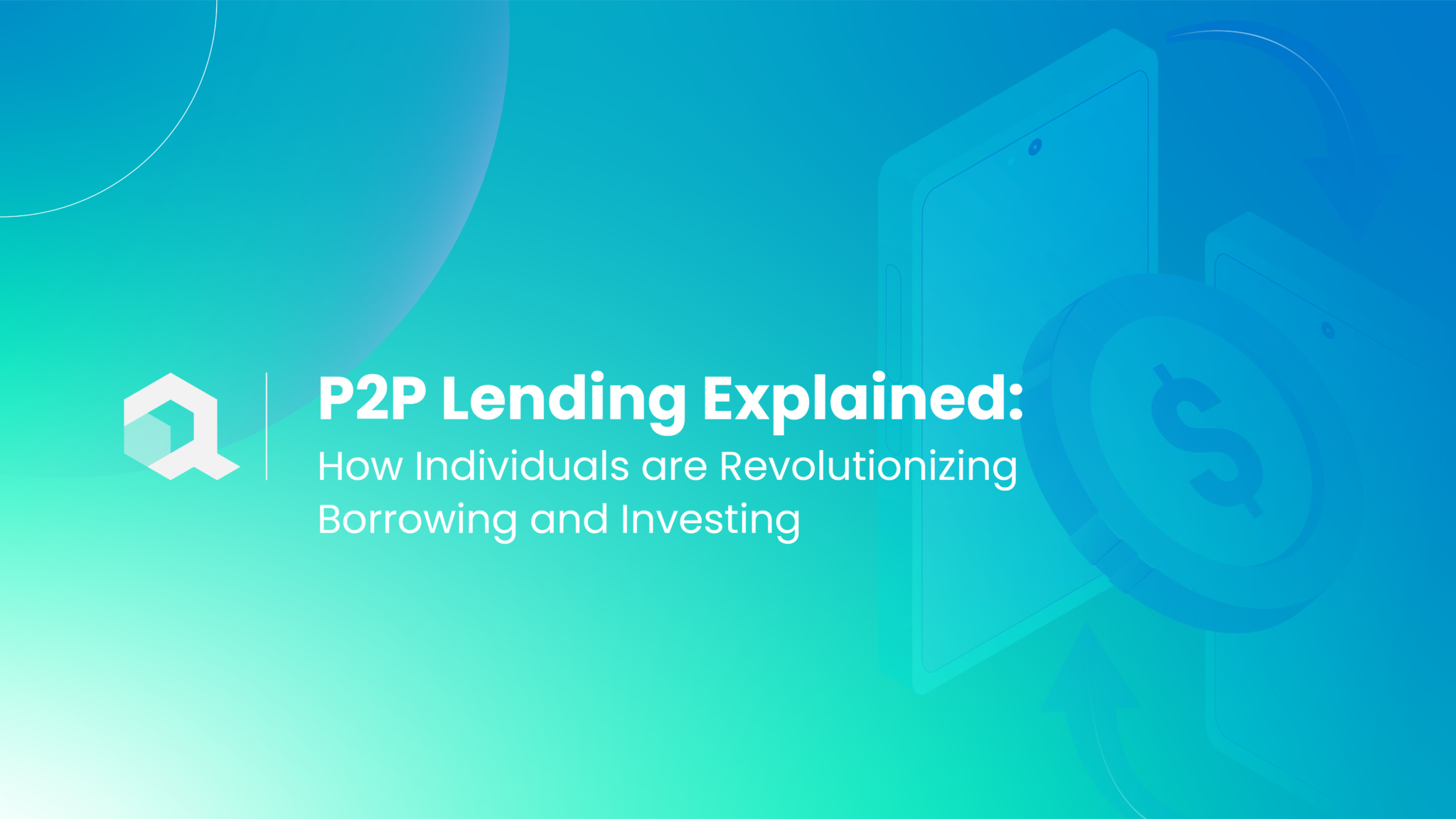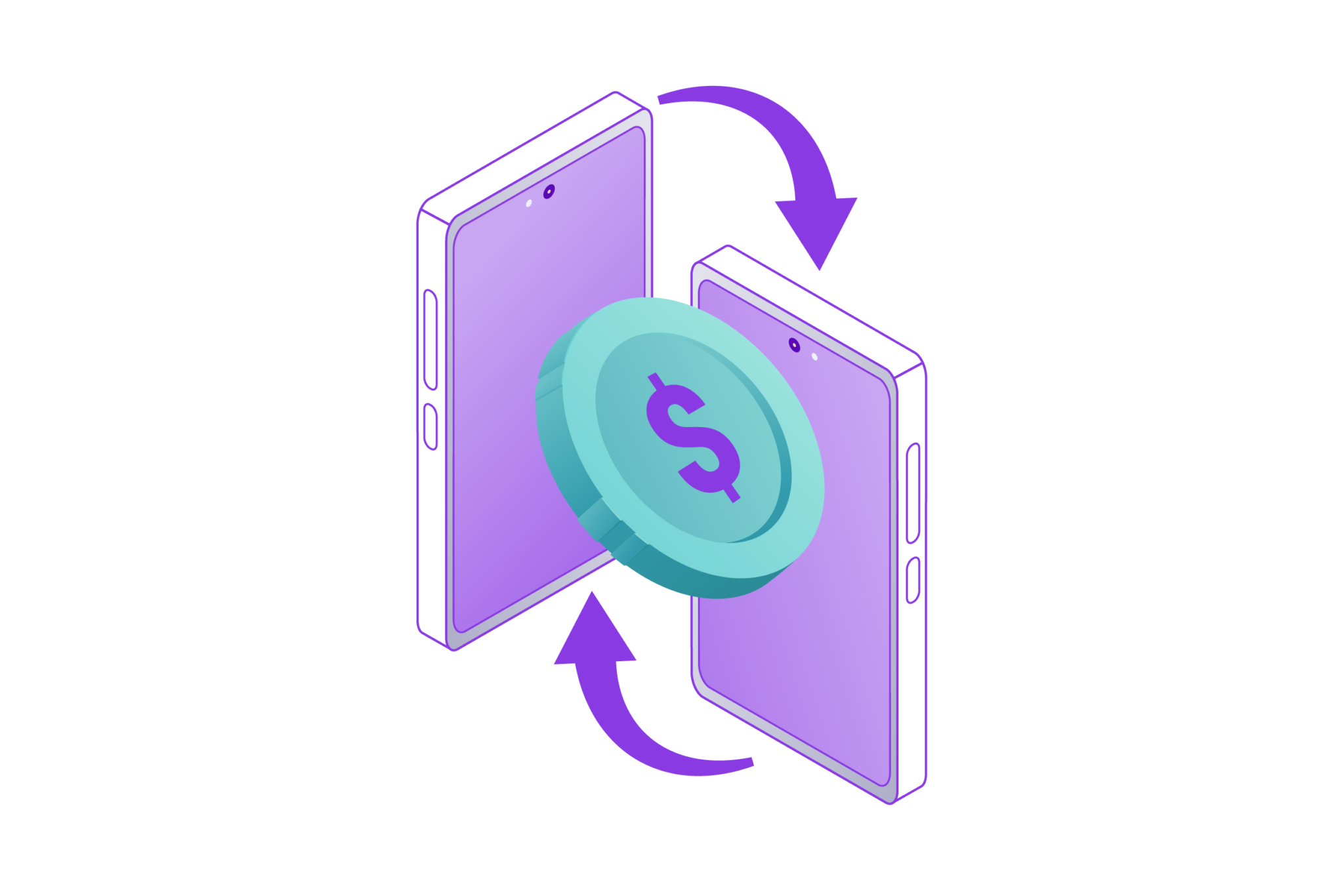
The model of financial disruption, peer-to-peer lending or P2P lending is also known as crowdfunding. It directly connects the borrower and a As a result, peer-to-peer lending is changing the face of finance and serving as an alternative to conventional formulas. This disruptive strategy has transformed the traditional banking system into a network of borrowers and lenders that interact directly through mutual connections.
P2P lending platforms, which are made possible by advanced technology, have become the basis of financial inclusion, targeting people who can’t get loans through conventional channels. The democratization of lending not only widens the sources but also redefines or reshapes financial transactions in general. This type of peer-to-peer lending has been growing because it can provide better rates to borrowers and higher yields for investors. In this paper, we are going to discuss the primary features of peer-to-peer lending and the strengths and weaknesses surrounding it as an innovative monetary practice.
The Basics of P2P Lending

Through decentralized debt, P2P lending is the latest development in the move to eliminate central financial authority from the traditional credit system. It connects borrowers to lenders through online platforms where they operate, delivering a vibrant marketplace. As initiators of the process, borrowers post elaborate loan listings that contain information on how much is required and for what reasons, in addition to an acceptable interest rate. This approach provides for a more individualized and open lending process relative to other banking channels.
Risk assessment is a crucial component of P2P lending. Platforms use credit checks and other factors to assess their willingness to repay, thus allowing them to determine suitable interest rates. Contrastingly, investors can scroll through these risk profiles and pick loans that match their attitude toward risks and return preferences. As an efficient strategy to reduce the losses incurred from defaulted loans, it is recommended that investments be diversified into multiple loans.
But the potential for greater returns in P2P lending is offset by default risks on behalf of borrowers. In making the decision of whether to invest, investors must note that attractive returns come with heightened default risk. Some P2P lending platforms allow for a secondary market, which helps investors sell out their loans to other investors before the term ends, thus improving liquidity.
P2P lending regulation is a diverse terrain that changes from country to country. However, some areas have developed certain frameworks to govern them, while others are still making developments in this area. It is critical for both lenders and borrowers to understand the regulatory landscape in order to operate effectively in the P2P loan market.
The success of P2P lending systems is dictated by technological advancements. Technology that is highly advanced, secure payment processing systems, and data encryption on strong levels are essential elements in the development of trust for users. Furthermore, the social aspect of P2P lending cannot be understated. P2P lending enables financial inclusion and economic freedom by facilitating the provision of capital resources to individuals and small businesses.
Advantages of P2P Lending

Peer-to-peer (P2P) lending offers several advantages for both borrowers and lenders, contributing to its growing popularity in the financial landscape:
1. Access to Funding
First and foremost, peer-to-peer (P2P) lending solves the problem of financial exclusion by providing an option for individuals and small businesses that might otherwise find it hard to access loans through traditional sources. In comparison to traditional institutions that were pent up by strict eligibility criteria, P2P lending provides a wider range of factors for its risk assessment, which gives various borrowers an opportunity. A democratization of lending provides those who have limited access to traditional financial services, such as banks and insurance companies, with a chance to acquire necessary funds, be it for personal use or business expansion. As a result, P2P lending is key to promoting financial inclusion and filling the gaps in regards to borrowing.
In addition to this, P2P platform application processes are less complicated, hence the quicker approval and disbursement periods as compared to traditional lenders. Such agility in providing financial support may also be critical for borrowers who urgently require funds or whose opportunities are time-sensitive, as P2P lending is one of the quickest and most efficient ways to obtain funding.
2. Competitive Interest Rates
One of the main strengths to be highlighted in P2P lending is the competitive interest rates offered by borrowers. The direct peer-to-peer nature of these transactions eliminates all the middlemen and unnecessary costs associated with them, allowing for more favorable rates in comparison to traditional banks. Individual investors and corporate entities, acting as lenders, have the freedom of choice to choose loans, determining their risk appetite based on expected returns. Such decentralized interest rate-setting effectively leads to competition that allows borrowers with different creditworthiness and financial statuses to have advantageous interests. As a result, P2P lending subverts the traditional banking model by encouraging greater transparency and market-oriented approaches to setting interest rates.
In addition, the investor’s diversification opportunity in different loans reduces risk. Through the diversification of investments, lenders are able to find an equilibrium between risk and return, which makes P2P loans a more attractive investment option. Considering these interest rate dynamics and diversification potential, P2P lending appears to be an attractive option for borrowers and lenders who are looking for mutually beneficial financial opportunities.
Also Read: Market Maker Options: Definition and How They Make Money
3. Quick Approval and Disbursement
In the world of conventional lending, moving from application to fund disbursal is a maze of paperwork, lengthy credit inquiries and red tape, leaving the borrower waiting even longer. This norm is further disrupted by P2P lending through the use of technology, which makes it easier and faster to approve a loan. Online lending platforms use automated systems that allow borrowers to submit loan applications, along with a fast evaluation of creditworthiness. This increased efficiency results in much shorter approval cycles, expediting borrowers’ access to their cash accounts. Such rapid approval and disbursement systems can be a game-changer for individuals or businesses with time-sensitive financial needs, providing an unparalleled speed of response that is difficult to match among traditional lenders.
Additionally, the fact that P2P lending is in digital form does not require physical visits to banks or financial institutions. Borrowers have the opportunity to go through the entire loan application process from home, which makes P2P lending even faster and easier for them. This digital process not only speeds up the loan life cycle but also meets current requirements regarding simple and convenient financial assets.
4. Flexible Loan Terms
The characteristic quality of P2P lending is flexibility in loan conditions, reflecting the variety and inconsistency of borrower needs. As opposed to the rigid structures imposed by traditional lenders, P2P platforms usually allow borrowers to customize their repayment terms. That flexibility enables borrowers to tailor their payment schemes based on income flows, hence improving debt repayment feasibility. Such flexibility can be especially important for those with an income that is seasonal or not constant, helping to ease any undue pressure caused by fluctuating pay.
Furthermore, P2P lending addresses the needs of borrowers in unique financial positions, such as those looking for loans targeted at special projects or short-term requirements. The customization of loan terms also allows for more personalized service than traditional lending, which is borrower-oriented. Although the adoption of loan terms that provide flexibility helps improve accessibility and customer satisfaction, it is important for borrowers to carefully analyze their implications in order to have a realistic repayment plan.
5. Diversification for Investors
This diversification is one of the important principles in investment strategy, and P2P lending serves as an unusual option to obtain it. In turn, a P2P lending platform allows investors to diversify their capital investment across many loans so that the potential default does not significantly affect their general returns. This diversification strategy is designed as a risk management tool, allowing investors to mitigate significant losses on one loan that defaults. Investors can build portfolios after being allowed to select suitable loans considering their risk profiles and outputs.
In addition, the fact that there is a secondary market on some P2P platforms increases investment liquidity. The investors can sell their loan holdings to other participants before the end of the term for these loans. This aspect of the secondary market allows investors an exit route if they have to sell their positions due to any reason, enabling a third degree of control as regards the management of investment portfolios.
Challenges and Risks P2P Lending

While Peer-to-Peer (P2P) lending comes with various advantages, it is crucial to acknowledge the challenges and risks associated with this alternative financing model:
1. Default Risk
Default risk is a critical issue in peer-to-peer lending, which might be related to the fact that borrowers are not able to pay back their loans. While P2P platforms use risk assessment procedures, borrowers’ ability to make payments may be affected by economic instabilities or unanticipated life events. For investors, there is the possibility of lower returns or losses in capital invested if borrowers default.
To minimize default risk, P2P lending platforms use effective risk assessment models that include several features, such as credit checks and income verification mechanisms, in most cases. But investors should also be aware of the intrinsic uncertainties and use diversification strategies such that they spread their investments among various loans, thus minimizing risk from default. The default risk is a dynamic and ever-changing environment, which requires continuous monitoring of the economic topography and proactive risk management for both platforms as well as investors to navigate this challenging landscape.
2. Liquidity Risks
In P2P lending, liquidity risks relate to the ability to convert investments into cash. Although some platforms have a secondary market available for selling investor positions in the loan holdings, not all of them offer this feature, and liquidity will be dependent on prevailing markets.
If there is no secondary market or in times of economic recession, investors may find it difficult to realize their investments quickly. In the absence of liquidity, investors are constrained in their ability to access funds on demand. Offered secondary market must be taken into account by the investors as a determining factor in their investment planning, whereby such liquidity risks should also be considered. A significant point for investors to keep in mind is the P2P lending platform policies on liquidity and analyzing historically how it trades affect their investment decisions.
Also Read: Market Making: Strategies and Techniques
3. Operational Risks
Operational risks are inherent in the dependence of P2P lending platforms on technology. Technical errors, cyber threats or platform problems can disrupt the lending process, resulting in losses of financial resources and issues regarding the integrity of data. Robust security protocols play a major role in ensuring the safety of user data and protecting the integrity of lending platforms.
P2P platforms should focus on developing robust cybersecurity infrastructure, regular auditing and contingency planning to prevent these risks effectively. Furthermore, educating the consumer on good practices regarding cyber security can reduce lending risks. Investors and lenders should know that the platform has good operational efficiency as well as systems to deal with any arising technical issues.
4. Interest Rate Risk
The interest rate risk in P2P lending is dependent on the variation of the market’s rates. Changes in interest rates influence both borrowers and lending parties. The interest rate changes will impact mainly investors, especially those who have long-term fixed-interest loans, on their investment returns.
Furthermore, interest rates may increase during the loan cycle, resulting in hurdles for borrowers and affecting their repayment capacity. To control interest rate risk, investors need to be aware of what is going on in the market and must pursue portfolio diversification through a variety of different loan types as well as maturity dates. P2P lending platforms can also help to manage risks by providing clear information regarding the calculation of interest rates and through the provision of various loan options that fit different risk appetites.
Conclusion
In spite of the challenges that characterize P2P lending, whether in terms of default risks or regulatory uncertainties, and with all its imperfections, it appears to have a strong and innovative niche within a globally shifting financial landscape. On the side of borrowers, there is an attraction towards uplifted availability in the getting-funds arena, which is competitive. The specific financial needs of small businesses, which are often neglected by traditional institutions, find a safe haven in the P2P lending approach. On the other end of the spectrum, investors are drawn to attractive returns as well as an opportunity to diversify, thereby mitigating risks through any kind of segmentation across various loans.
With the development of the P2P lending sector, it is expected to grow with even more innovations and trends that will determine its future. It is predicted that the integration of innovative technologies, namely blockchain technology, will cause lending transactions to change in their essence as they become more transparent and secure. Moreover, the incorporation of artificial intelligence and machine learning is set to sharpen risk assessment models, which will result in more accurate predictions on borrower creditworthiness. The P2P lending industry’s capacity to adjust, reflected in the existing global expansion of such centers and a potential transition towards DeFi principles, proves that it is also well-committed to pursuing financial inclusivity on an international level.
Disclaimer: The information provided by Quant Matter in this article is intended for general informational purposes and does not reflect the company’s opinion. It is not intended as investment advice or a recommendation. Readers are strongly advised to conduct their own thorough research and consult with a qualified financial advisor before making any financial decisions.

I craft stories that make complex ideas clear. I simplify the blend of data science, machine learning, and crypto trading, showcasing how advanced tech and quantitative models analyze data for informed trading choices. Join me in exploring the realm of quantitative trading, where my narratives make intricate concepts easy to grasp.
- Alifia Berizkyhttps://quantmatter.com/author/alifia-berizky/
- Alifia Berizkyhttps://quantmatter.com/author/alifia-berizky/
- Alifia Berizkyhttps://quantmatter.com/author/alifia-berizky/
- Alifia Berizkyhttps://quantmatter.com/author/alifia-berizky/
